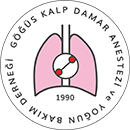

Evaluation of Driveline Infections in Diabetic Patients with Left Ventricular Assist Devices
Zeynep Ece Demirbaş1, Mutlu Şeyda Öcalmaz2, Gözde Tekin3, Murat Sargın31Department of Internal Medicine, Dr. Siyami Ersek Thoracic and Cardiovascular Surgery Training and Research Hospital, İstanbul, Türkiye2Department of Infectious Diseases and Microbiology, Dr. Siyami Ersek Thoracic and Cardiovascular Surgery Training and Research Hospital, İstanbul, Türkiye
3Department of Cardiovascular Surgery, Dr. Siyami Ersek Thoracic and Cardiovascular Surgery Training and Research Hospital, İstanbul, Türkiye
Objectives: Left ventricular assist devices (LVADs) are critical in advanced heart failure management, yet driveline infections remain a significant complication. This study aimed to evaluate the microbiological profile and clinical outcomes of driveline infections in diabetic and nondiabetic LVAD patients.
Methods: We conducted a retrospective analysis of 40 LVAD patients with driveline infections between January 2020 and December 2024. Microorganisms were categorized as gram-positive, gram-negative, or fungal agents, and their prevalence was compared between diabetic and nondiabetic groups. Clinical outcomes, including recurrence, bacteremia, and mortality, were analyzed.
Results: Gram-positive bacteria were the most commonly isolated microorganisms in both diabetic (53.2%) and nondiabetic (63.6%) groups, with no statistically significant difference (p=0.285). Staphylococcus aureus was more frequently isolated in nondiabetic patients (25% vs. 12.9%, p=0.110). Gram-negative bacteria and fungal agents were identified in 35.8% and 6.6% of cases, respectively, with similar distributions across groups. Mortality was primarily influenced by age (AOR: 0.879, 95% CI: 0.789-0.979, p=0.019), while other demographic and clinical factors showed no significant associations.
Conclusion: The microbiological profile of driveline infections in diabetic and nondiabetic LVAD patients is comparable, with minor differences in pathogen prevalence. Age was a significant independent risk factor for mortality, whereas diabetes did not contribute to differences in clinical outcomes. Larger, prospective studies are needed to validate these findings and optimize infection management strategies.
Manuscript Language: English
(2591 downloaded)

















